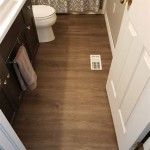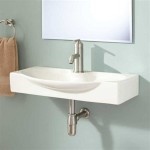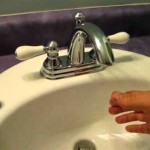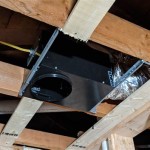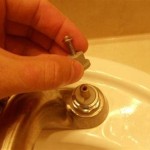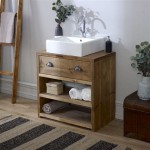Bathroom Images With Freestanding Bathtubs: A Design Exploration
Freestanding bathtubs have become a popular focal point in modern bathroom design. Their sculptural presence elevates the aesthetic of the space, transforming a utilitarian room into a sanctuary of relaxation. Bathroom images featuring freestanding bathtubs showcase a variety of styles, from minimalist to luxurious, demonstrating the bathtub's versatility and ability to complement diverse design sensibilities.
This article will explore the design elements that contribute to the visual appeal of bathrooms incorporating freestanding bathtubs. It will analyze how various factors such as bathtub styles, surrounding materials, lighting, and spatial arrangement influence the overall aesthetic and create different atmospheres within the bathroom.
Choosing the Right Freestanding Bathtub Style
The choice of a freestanding bathtub significantly impacts the overall design of the bathroom. Bathtubs are available in a range of materials, shapes, and sizes, each contributing to a distinct visual effect. Common materials include acrylic, cast iron, copper, and stone resin. Acrylic bathtubs are lightweight and affordable, while cast iron bathtubs offer superior heat retention and durability. Copper bathtubs provide a unique and luxurious touch, developing a natural patina over time. Stone resin bathtubs offer a smooth, seamless finish and a contemporary aesthetic.
Regarding shape, options range from classic clawfoot tubs to modern, minimalist designs. Clawfoot bathtubs evoke a vintage charm and are often paired with traditional fixtures and décor. Slipper bathtubs, with one end raised for comfortable reclining, offer a blend of classic and modern styles. Rectangular bathtubs with clean lines provide a contemporary and minimalist aesthetic, suitable for modern bathrooms. Oval bathtubs offer a softer, more organic feel, while round bathtubs create a dramatic focal point.
Size is also a crucial consideration. The bathtub should be appropriately sized for the bathroom space, allowing for comfortable movement and circulation. A bathtub that is too large can overwhelm a small bathroom, while a bathtub that is too small may not provide adequate space for relaxation. Ultimately, selecting the appropriate bathtub requires careful consideration of personal preferences, budget, and the overall design vision for the bathroom.
Surrounding Materials and Textures
The materials and textures surrounding the freestanding bathtub play a crucial role in defining the bathroom's overall aesthetic. Flooring materials, wall finishes, and accent pieces all contribute to the visual harmony of the space.
Flooring options include tile, stone, wood, and concrete. Tile is a popular choice due to its durability, water resistance, and wide range of styles. Stone flooring, such as marble or travertine, adds a touch of luxury and elegance. Wood flooring provides warmth and natural beauty, but requires careful sealing and maintenance to prevent water damage. Concrete flooring offers a modern and industrial aesthetic.
Wall finishes can range from paint and wallpaper to tile and stone. Neutral colors, such as white, gray, and beige, create a calming and serene atmosphere. Bold colors and patterns can add visual interest and personality. Tile walls are a practical choice for areas directly exposed to water, such as the shower and bathtub surround. Stone walls add texture and character to the bathroom.
Accent pieces, such as rugs, artwork, and plants, can further enhance the visual appeal of the bathroom. A plush rug placed near the bathtub provides a soft and comfortable surface underfoot. Artwork adds a personal touch and can complement the overall color scheme. Plants bring life and freshness to the space, creating a more inviting and relaxing atmosphere. The strategic use of these elements helps to create a cohesive and visually appealing bathroom design.
Lighting and Spatial Arrangement
Lighting is a critical element in bathroom design, influencing the mood and functionality of the space. Both natural and artificial lighting should be carefully considered to create a well-lit and inviting atmosphere.
Natural light is highly desirable in a bathroom, providing a bright and cheerful ambiance. Large windows or skylights can maximize the amount of natural light entering the space. However, privacy concerns should be addressed with appropriate window coverings, such as blinds, shades, or frosted glass.
Artificial lighting should be layered to provide both ambient and task lighting. Ambient lighting provides overall illumination to the room, while task lighting focuses on specific areas, such as the vanity or shower. Recessed lighting, pendant lights, and sconces are common options for artificial lighting in the bathroom. Dimmable lighting allows for adjusting the brightness level to suit different moods and activities.
The spatial arrangement of the bathroom elements is also crucial to the overall design. The placement of the freestanding bathtub should be carefully considered to maximize space and create a visually appealing layout. The bathtub can be positioned in the center of the room as a focal point, or placed against a wall to save space. The surrounding area should be kept clear of clutter to create a sense of openness and tranquility. The arrangement of other bathroom fixtures, such as the vanity, toilet, and shower, should be carefully planned to ensure a functional and aesthetically pleasing space. The layout should facilitate easy movement and create a comfortable and relaxing environment.
Furthermore, the accessories chosen must complement and enhance the theme. Consider the style of faucets, showerheads, and towel racks. These elements should not only be functional but also contribute to the overall aesthetic cohesiveness. For instance, brushed nickel fixtures can complement a modern design, while oil-rubbed bronze fixtures add a touch of vintage charm.
The integration of technology can also play a role in modern bathroom design. Features such as smart mirrors with built-in lighting and touch controls, or digitally controlled shower systems, can add a layer of convenience and sophistication. However, these technological additions should be carefully considered to ensure they align with the overall design style and budget.
Incorporating storage solutions is essential for maintaining a clutter-free bathroom. Built-in shelving, vanity cabinets, and linen closets can provide ample storage space for toiletries, towels, and other essentials. The storage solutions should be both functional and aesthetically pleasing, blending seamlessly with the overall design. Consider incorporating floating shelves for a minimalist look or repurposing vintage cabinets for a more eclectic style.
The use of color psychology can significantly influence the mood of the bathroom. Cool colors, such as blue and green, promote calmness and relaxation, while warm colors, such as yellow and orange, evoke feelings of energy and optimism. Neutral colors, such as white and gray, create a sense of spaciousness and tranquility. The choice of color palette should be carefully considered to create the desired atmosphere in the bathroom.
Texture plays a crucial role in adding depth and visual interest to the bathroom. Different textures can be incorporated through the use of materials such as stone, wood, tile, and fabric. A combination of smooth and rough textures can create a dynamic and engaging space. For example, pairing smooth marble countertops with rough stone walls can create a visually appealing contrast.
Finally, personal touches are essential for creating a bathroom that reflects the homeowner's individual style and preferences. Displaying personal artwork, photographs, or collectibles can add a unique and personal touch to the space. Incorporating elements that evoke memories and emotions can transform the bathroom into a true sanctuary.

Bathroom Renovation Ideas Refresh Your Space With A Freestanding Tub

Freestanding Vs Built In Bathtubs Pros And Cons

Bathroom Furniture Bathtub Freestanding Spa Ambiente

Freestanding Vs Built In Bathtubs Pros And Cons

Ten Designer Bathrooms With Freestanding Baths

Luxury Bathrooms Freestanding Bathtubs Define Luxurious Trends To Modern Maison Valentina Blog

12 Bathtubs For Small Spaces 2024 Badeloft

Freestanding Bathtubs Bath Taps Just In Place Sydney

Can I Fit A Freestanding Bath In Small Bathroom Porcelanosa

Snowden Small Free Standing Bath Suite Victorian Plumbing
Related Posts
